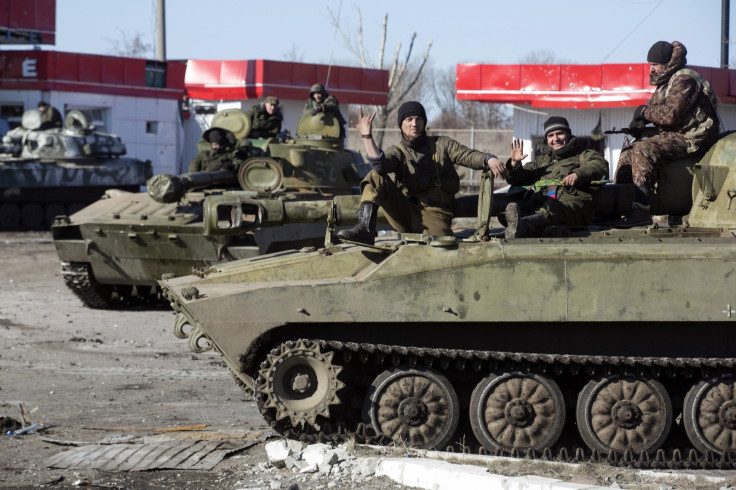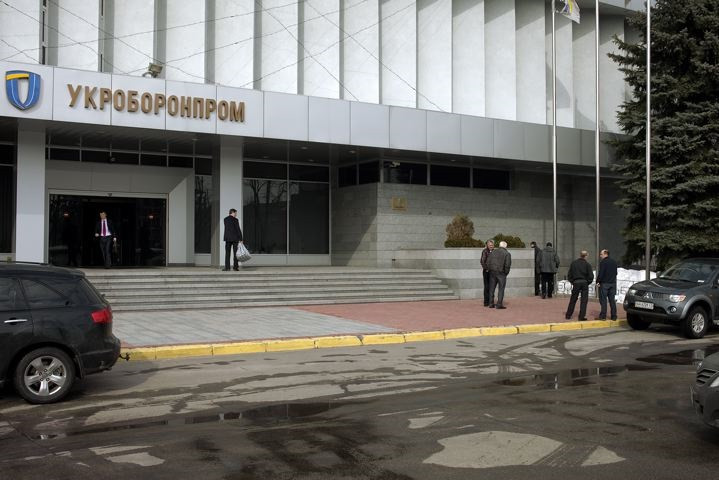Sending weapons to Ukraine without clear plan will only increase bloodshed

In the past year, repeated pleas to arm Ukraine have echoed through Nato, but no consensus has been reached to date. While Germany and France have been reluctant to provide Ukraine with weapons, attempting instead to renegotiate now-politically embarrassing arms deals with Russia, some of their European neighbours have been more enthusiastic.
Lithuania has sent small arms worth €43,500 (£31,453) and Poland has been leaning in the same direction, but alternating between aid and direct sales. Finland has sold LFR rangefinders, and a private contractor in the UK is fulfilling a contract signed when Yanukovych was still in power to supply ex-British Army armoured personnel carriers.
In the meantime, US Senators John McCain and Lindsay Graham have continued to campaign for the provision of "lethal aid" in general. Retired US Army General Wesley Clark, a former Supreme Commander of Nato, has been more specific in suggesting that Ukraine needs T-72 tanks, even though Ukroboronprom, Ukraine's state-owned defence conglomerate, has exported T-72s for years
Senator Bob Corker proposed a bill in 2014 that included a shopping list of "lethal aid", with a price tag of $100m (£67m). The US Senate passed a less ambitious piece of legislation last December, which authorised the President to supply these weapons. But the case is still far from proven. While the Russian presence in eastern Ukraine leaves little to doubt, advocates of arming Ukraine have a lot to clarify before any military aid can be provided in good faith.
Crucially, Ukraine already has weapons, lots of them. When war broke out in 2014, dozens of international disarmament initiatives were underway across the country, aimed at reducing the number of small arms and light weapons (SALWs) and safely handling radioactive materials and missile technology. The SALW disposal project, jointly organised by Ukraine and the Nato Support Agency (NSPA), remains the largest demilitarisation project ever undertaken in Nato's history. In 2013 the NSPA estimated that over 400,000 small arms had yet to be taken out of circulation, and it would take another eight years to complete.
Even in times of peace these efforts posed enormous challenges due to the complex procedures that disposal entails. So complex, in fact, that it was agreed that Ukraine should, when possible, attempt to donate or sell some of the ammunition before proceeding to get rid of it locally. Approximately 845m Ukrainian grivna (£24m) was allocated for utilization of the surplus through sales, allowing Ukroboronprom to sell the surplus at a price of 50-75 kopeks per AK-47 bullet, hand grenades at 60-100 grivna (£1.70-£2.90), and assault rifles for 300-500 grivna (£9-£14). The geography of these deliveries varied, but the major buyers hailed from African and Asian countries.
In 2013 the NSPA estimated that over 400,000 small arms had yet to be taken out of circulation, and it would take another eight years to complete.
These programs, although currently on hold, are still valid. The reinstatement of these projects will pose a challenge for post-war Ukraine and will cost international donors a lot more than €4m (£2.8m) a year. Not to mention that the existing utilisation model will ensure there is an influx of cheap arms and ammunition to conflicts in the developing world.
After a year of warfare in the east, some of the stockpiles have been partially looted, relocated, or at risk of falling into the hands of the pro-Russian militia. Yet a huge amount of weaponry remains. One high-ranking Ukrainian military official, involved in the effort to move part of the stockpile near Artemievsk, joked "it would take us 3.5 years to move the entire cache into a secure location."
The long lead-time needed is in part the result of the sheer volume of weapons Ukraine possess, whether Soviet surplus or built after 1991. It also demonstrates the size of the Ukrainian defence industry, built around state-run giant Ukroboronprom.
Ukroboronprom enjoys a relative degree of autonomy, and consists of seven key companies: Ukrspetsexport, and its six subsidiaries of Ukrinmash, Progress, Ukroboronservice, Spetstechnoexport, Promoboronexport, and Tasko-Export. The conglomerate also provides an umbrella for 125 other firms, specialising in everything from aviation to communications.

The US is one of Ukroboronprom's key customers, as are its allies Egypt and South Korea. Yet Ukroboronprom and its subsidiaries have been involved in the transfer of arms to Syrian rebels, as well as large deliveries of weapons to Sudan, India and UN-embargoed Liberia.
In 2014 the company began to trade internally with the volunteer battalions. Ukrainian newspapers Nashi Groshi and Zerkalo Nedeli reported that Ukroboronprom had entered into a "grey deal" with the Ukrainian volunteer battalions, making around 84 million grivna (£2.4m) by selling these pro-government militias drones, AFVs, and small arms and ammunition. Both the Ministry of Defence and Ukroboronprom attempted to sue Zerkalo Nedeli over the investigation, but the journalists stood their ground and refused to retract the story.
The activities of companies such as Ukroboronprom show that Ukraine has plenty of weapons, and the capacity to make them; throwing arms at the country isn't going to help. Just giving lethal aid at random would not help Ukraine any more than it would help to treat a sick patient with just any old medicine.
Soviet hangover
Nic Jenzen-Jones, director of consultancy firm Armament Research Services (ARES), notes that Ukraine's stockpile is largely the product of a Soviet doctrine geared for high-intensity warfare. While Ukraine does have a surplus of weapons and armoured fighting vehicles, many of these are less suited to low-intensity urban conflict, something many Nato states are well equipped for.
According to Jenzen-Jones, Ukraine would benefit from ISR (intelligence, surveillance, and reconnaissance) platforms, including UAVs; command & control, battlefield management, and communication systems; limited numbers and types of anti-tank guided weapons (ATGW) and other precision guided munitions (PGM); body armour; and limited numbers of mine-resistant ambush-protected (MRAP) vehicles and other light tactical vehicles.
Of course in order to use these weapons Ukrainian fighters, participating in what until this point was largely a DIY war, must first be trained in their use. A report by the Ukrainian magazine GORDON last year found that while recruits do have access to modern equipment, they often do not know how to use it properly due to insufficient training.
Committing to training the Ukrainian Armed Forces while donating ISR and other such devices may not lead to victory, and will be expensive for the willing states, but sending weapons en bloc will only further the bloodshed, ensuring decades of post-conflict clean up.
Mari Bastashevski is a journalist who was born in Russia and is now based in Switzerland. She writes extensively about Russia and the Ukraine. Visit her website for more information.
© Copyright IBTimes 2025. All rights reserved.




















